ANIMALS
25 Deadliest Sea Creatures In The World
Published
12 months agoon
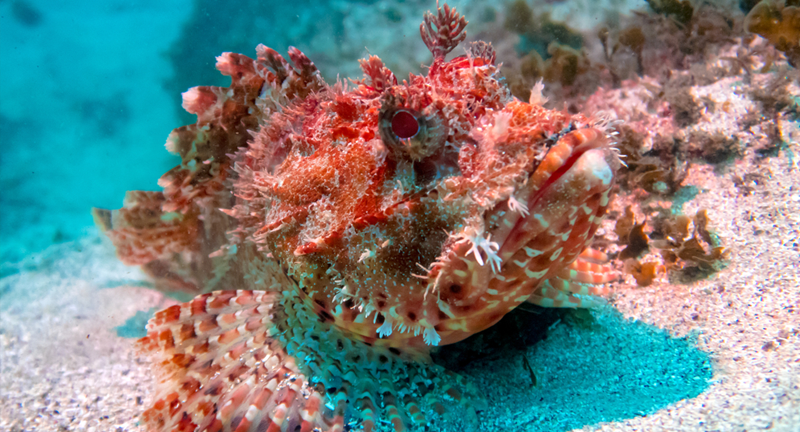
Shutterstock
Covering more than 70% of the Earth’s surface, the ocean is an immense and enigmatic realm, brimming with diverse life forms. It’s home to a multitude of species, from those celebrated for their breathtaking beauty and intricate complexity to those notorious for their potential threat to human safety. The ocean’s deadliest inhabitants include venomous jellyfish, formidable sharks, stealthy fish, and mighty marine mammals. This exploration unveils the intriguing and sometimes fearsome features of 25 such marine creatures, showcasing the remarkable diversity and the dangers lurking in the ocean depths. Each organism, with its distinct skills and attributes, plays an essential part in the oceanic ecosystem. They also remind us of the respect and caution required when we venture into their territory.
Box Jellyfish
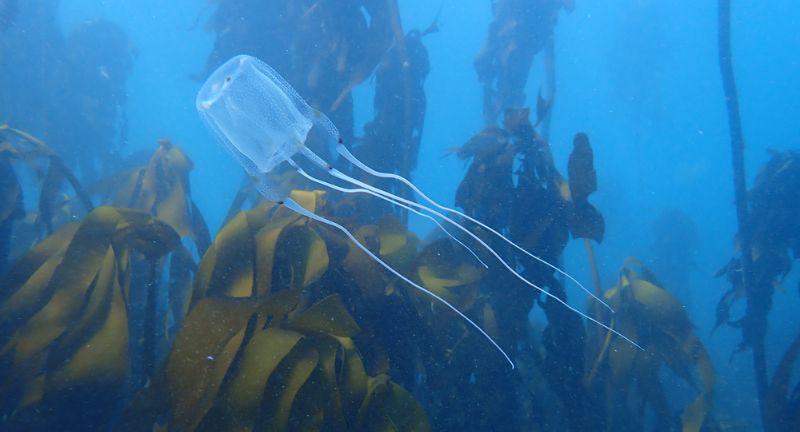
Wikipedia
Box Jellyfish stand as some of the ocean’s most lethal creatures, armed with venom that can be deadly in mere minutes. Their elongated tentacles are laden with cnidocytes, venomous cells that can induce heart failure, paralysis, and intense pain in humans. Interactions with these jellyfish can lead to fatal outcomes, underscoring the need for vigilance in waters where they’re prevalent. Their almost invisible bodies further elevate the risk, making them a hidden threat to swimmers and divers who might not see them until it’s too late.
Great White Shark
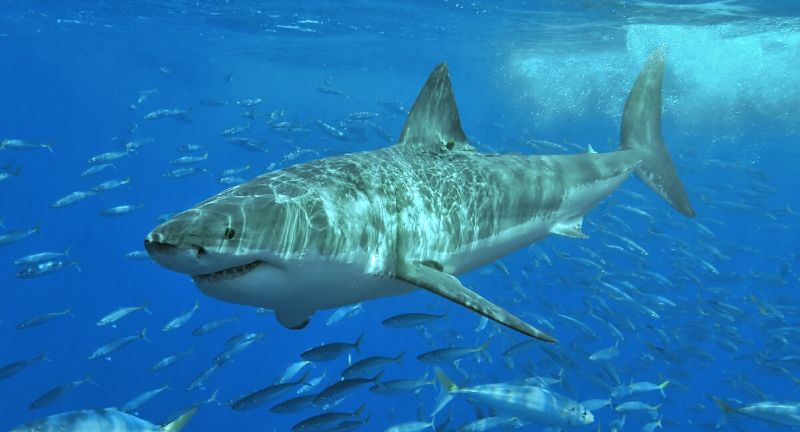
Wikipedia
Great White Sharks are recognized as the ocean’s apex predators, notorious for their formidable jaws and razor-sharp teeth. While capable of causing severe injuries or even death, human attacks by these sharks are exceedingly rare and usually occur due to mistaking humans for their typical prey like seals. As apex predators, they play an essential role in maintaining the health of the marine ecosystem, controlling the population of other marine species. Despite their intimidating reputation, the reality is that these majestic beings face greater threats from human activities than humans do from them, highlighting the need for conservation efforts to protect these vital marine inhabitants.
Blue-Ringed Octopus
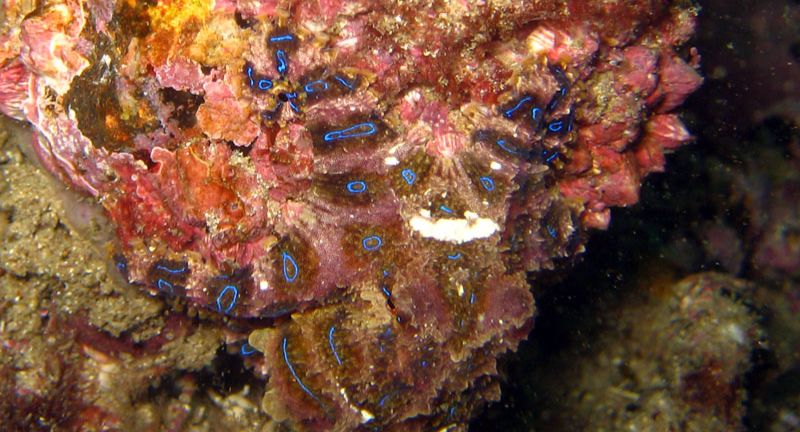
Wikipedia
The Blue-Ringed Octopus, while small in stature, is one of the ocean’s most dangerous inhabitants, equipped with venom that includes potent neurotoxins lethal to humans. Despite its small size, it possesses enough venom to fatally poison 26 adults in a matter of minutes, with no existing antivenom to counteract its effects. Typically, this octopus reveals its vibrant blue rings as a danger signal when feeling threatened. Both divers and swimmers are advised to be exceedingly careful in the vicinity of these octopuses, which inhabit tide pools and coral reefs across the Pacific and Indian Oceans.
Saltwater Crocodile
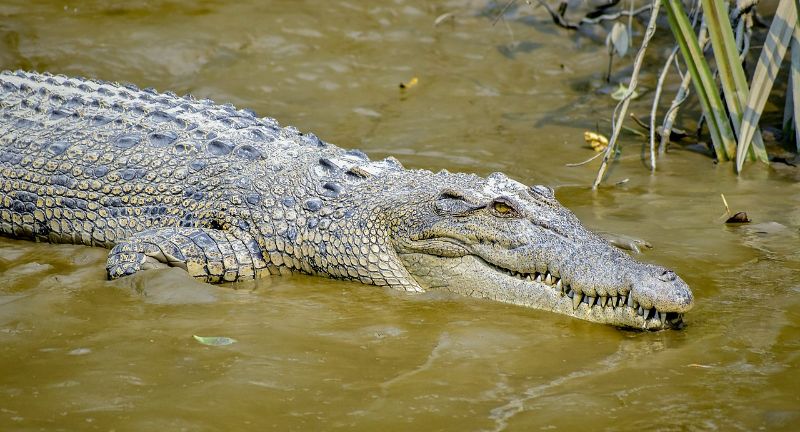
Wikipedia
Saltwater Crocodiles, the titans among living reptiles, are distinguished by their formidable size, strength, and aggressive nature, capable of overpowering large animals. They thrive in both saltwater and freshwater habitats, ranging from oceanic environments to rivers, estuaries, and even inland water bodies. Encounters with these crocodiles pose a significant risk to humans, often resulting in severe injuries or fatalities, attributed to their powerful bite and immense size. Despite the danger they represent, conservation initiatives are vital to ensure their continued existence. Their numbers have seen declines in certain regions, impacted by habitat destruction and hunting, underscoring the need for efforts to protect these apex predators and their ecosystems.
Stingrays
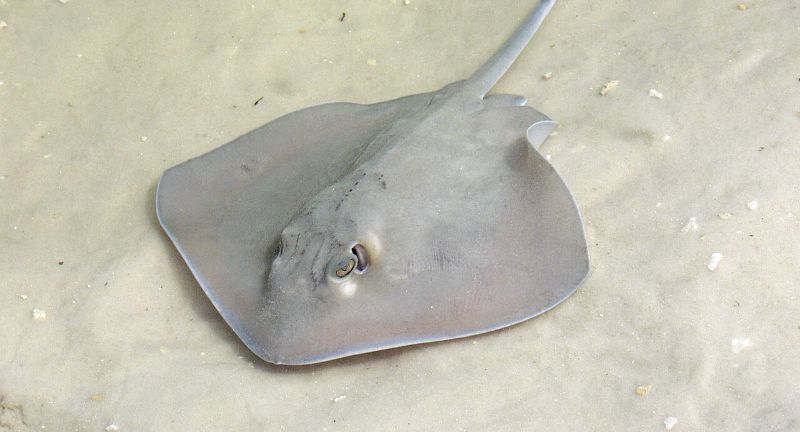
Wikipedia
Stingrays, with their distinctive tails equipped with venomous spines, utilize this feature primarily as a defense against predators. Although interactions between stingrays and humans are generally safe, unintended stings can happen, leading to intense pain, swelling, and on rare occasions, fatal outcomes. The venom has tissue-damaging properties and can lead to infections, making medical treatment essential. These elegant marine animals typically conceal themselves beneath the sand in shallow waters. To minimize the risk of accidentally stepping on them, it’s advised for swimmers to shuffle their feet while entering the sea.
Lionfish
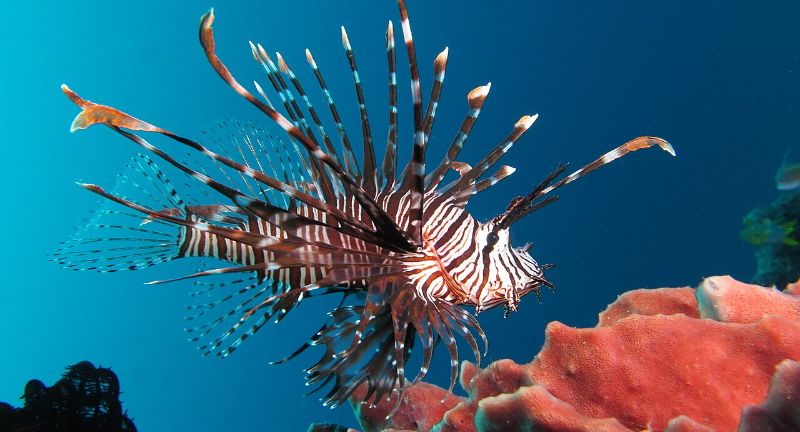
Wikipedia
Lionfish, recognized for their striking stripes and venomous spines, represent a threat not only to human safety but also to marine ecosystems. Their spines are capable of inflicting a sting that, though seldom fatal to humans, can lead to nausea, respiratory issues, and severe pain. As invasive species, especially prevalent in the Caribbean and along the U.S. East Coast, their lack of natural predators allows them to considerably upset the balance of local marine environments. To mitigate their impact, there are initiatives aimed at reducing their numbers, including promoting their removal by divers and fishermen from areas where their presence is harmful.
Sea Snake
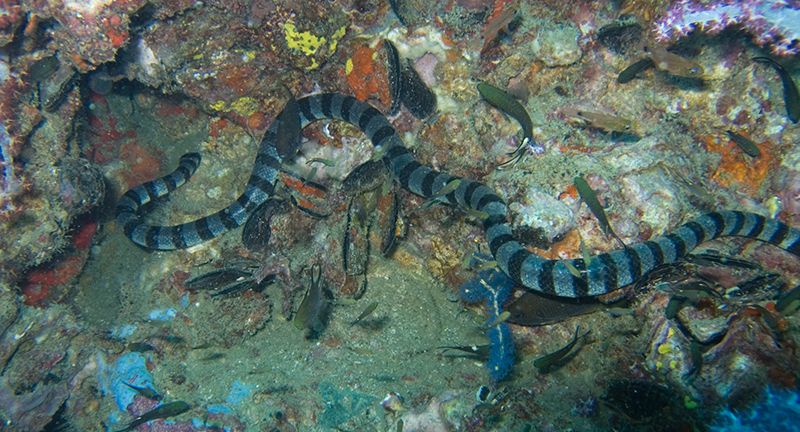
Wikipedia
Sea Snakes, possessing potent venom, thrive in the warm coastal regions of the Indian and Pacific Oceans, showcasing remarkable adaptations to marine life including paddle-shaped tails for swimming and specialized glands for salt excretion. Despite having venom that is more toxic than that of many terrestrial snakes, sea snakes typically display a non-aggressive demeanor towards humans, making bites an uncommon occurrence. Divers are advised to exercise caution and respect around these serpents, steering clear of any actions that might provoke them or attempts to interact physically.
Tiger Shark
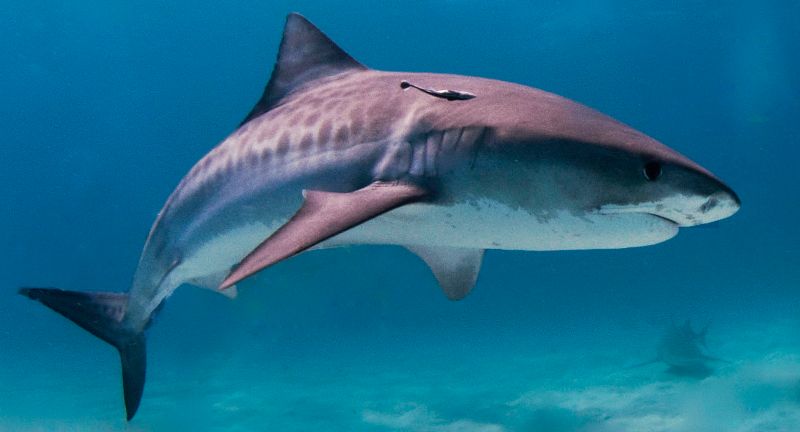
Wikipedia
Tiger Sharks, distinguished by their unique dark stripes, are versatile eaters and have been known to occasionally attack humans. As apex predators, their diet is less discriminating compared to other shark species, encompassing a broad spectrum of prey, including the occasional ingestion of inedible items. They are crucial for the balance of marine ecosystems, notably in regulating the populations of sea turtles and various other marine creatures. Although they are regarded as one of the shark species that pose a greater risk to humans, actual attacks are exceedingly rare and are typically the result of mistaken identity.
Portuguese Man O’ War
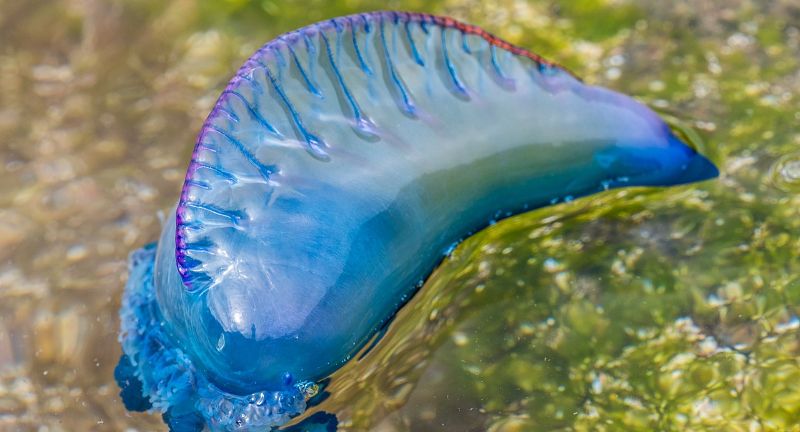
Wikipedia
The Portuguese Man O’ War, frequently confused with a jellyfish, is in fact a siphonophore—an intricate assembly of symbiotic organisms operating collectively. Its extended tentacles are notorious for administering stings that, while incredibly painful and potentially deadly, especially to those with allergies, produce severe discomfort and welts upon the skin. In extreme situations, such stings can escalate to breathing difficulties, cardiac complications, and fatalities. Beachgoers are advised to remain vigilant for these entities, which drift on the warm ocean currents and can occasionally be found stranded on beaches.
Moray Eel
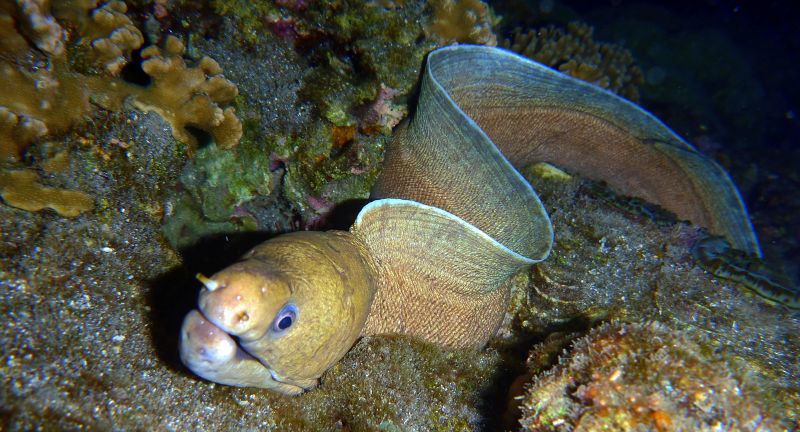
Wikipedia
Moray Eels, known for their aggression when disturbed, are equipped with sharp teeth capable of delivering a potent bite. These creatures are primarily nocturnal, spending their days concealed within crevices and holes in the reef, emerging under the cover of night to feed. Although they lack venom, the bacteria present in their mouths can lead to severe injuries and infections following a bite. Divers are advised to exercise caution and avoid any actions that might provoke or disturb these eels, as they are known to defend their territory vigorously.
Bull Shark
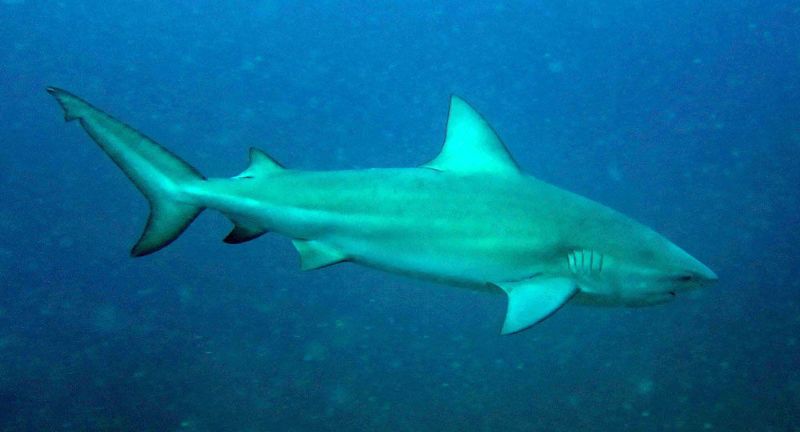
Wikipedia
Bull Sharks, distinguished by their aggressive demeanor and unique capability to venture into freshwater, stand out as one of the select shark species capable of thriving in both saline and fresh water environments. Their propensity for unpredictable behavior, coupled with a tendency to frequent shallow waters, heightens the potential for human encounters. Equipped with formidable jaws, Bull Sharks have been implicated in several unprovoked attacks on humans; however, such incidents remain infrequent. Their remarkable adaptability has enabled them to occupy diverse coastal habitats globally, showcasing their ecological versatility.
Sperm Whale
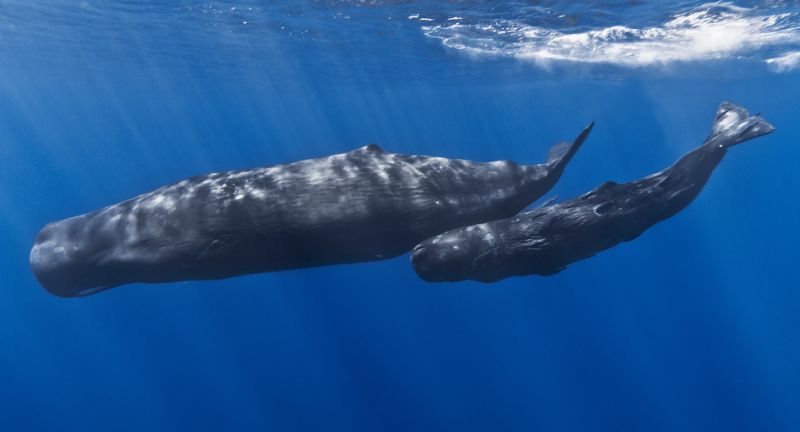
Wikipedia
Sperm Whales, though generally not aggressive towards humans, can present hazards through their sheer size and the strength of their tails. As the largest toothed whales, they possess remarkable deep-diving skills, frequently descending more than 2,000 meters to hunt for squid, which constitutes their main diet. Encounters with these magnificent beings are uncommon, typically happening in deep oceanic waters well away from coastal regions. Their preservation is paramount, confronted with challenges such as whaling, collisions with vessels, and entanglement in fishing equipment. The continuation of conservation initiatives is vital to ensure the ongoing survival of these extraordinary marine mammals.
Piranhas
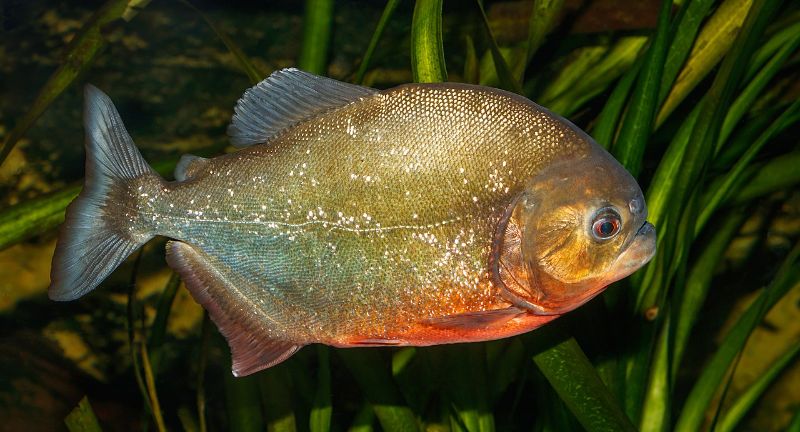
Wikipedia
Piranhas, frequently portrayed in popular culture as voracious predators, possess sharp teeth and a reputation for potential aggression under specific circumstances. Despite the sensationalized image, actual attacks on humans are exceedingly uncommon and rarely result in fatalities, though they can lead to severe injuries. These freshwater fish typically prefer to escape rather than engage, with most encounters resulting from either provocation or mistaken identity. A better comprehension of piranhas’ natural tendencies and a respectful approach to their habitats can significantly reduce the likelihood of adverse interactions when swimming in regions inhabited by these fish.
Goblin Shark
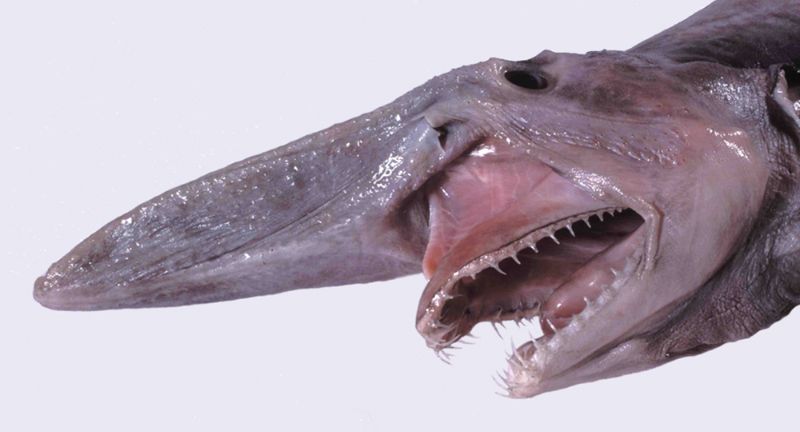
Wikipedia
The Goblin Shark stands out in the deep-sea realm for its unique and somewhat eerie appearance, characterized by a protruding jaw and sharp, nail-like teeth. This shark is a rarity, seldom seen by humans, primarily because it dwells in depths beyond the reach of recreational diving. Encounters with humans are typically accidental, occurring when these sharks are inadvertently caught in deep-sea fishing nets. Despite its formidable appearance, the Goblin Shark poses minimal to no threat to humans, given the extreme rarity of direct interactions. This elusive species remains one of the ocean’s many mysteries, intriguing to those interested in the depths of marine life.
Barracuda
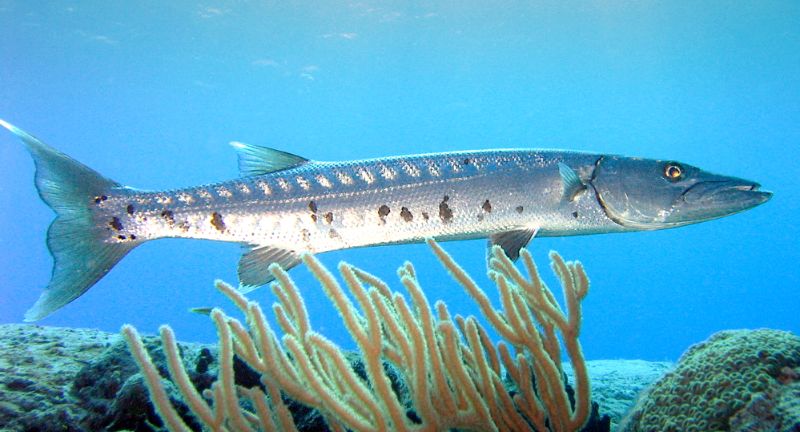
Wikipedia
Barracudas are renowned for their formidable jaws, intimidating appearance, and swift predatory movements. These fish, armed with razor-sharp, pointed teeth, are capable of causing significant injuries, particularly if they confuse reflective objects with their natural prey. Although incidents involving humans are infrequent, they can happen, often due to either provocation or mistaken identity. Individuals swimming or diving in areas inhabited by barracudas should refrain from wearing shiny jewelry and remain vigilant, minimizing the risk of unwanted encounters with these swift and powerful marine predators.
Irukandji Jellyfish
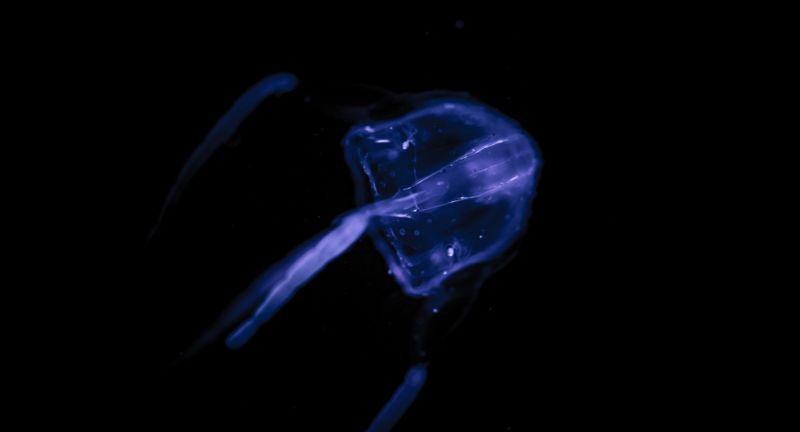
Wikipedia
The Irukandji Jellyfish, despite its diminutive size, ranks among the most venomous creatures in the sea, capable of inducing the perilous Irukandji syndrome. This condition can escalate to life-threatening levels, with symptoms including severe hypertension, intense pain, and, in certain instances, deadly brain hemorrhages. The insidious nature of an Irukandji sting lies in the delayed onset of symptoms, posing a heightened risk to those unaware of the encounter. Predominantly located in the waters off northern Australia, it’s imperative for swimmers in these regions to exercise heightened caution and awareness.
Electric Eel
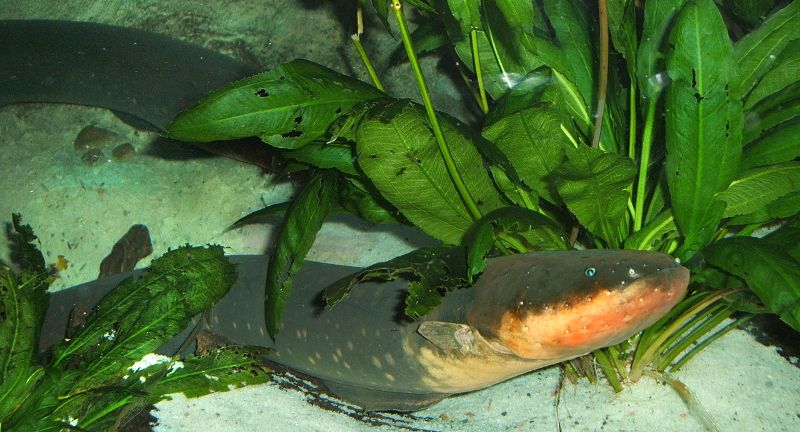
Wikipedia
Electric Eels, known for their ability to generate potent electric shocks, utilize this capability for both predation and self-defense. The shocks they produce are sufficiently powerful to stun or repel potential threats, humans included. Despite their name, these creatures are not true eels but belong to the knifefish family, residing in the freshwater environments of the Amazon and Orinoco river basins. Interactions with electric eels can pose serious risks, and it is strongly recommended that people steer clear of handling or approaching them closely to avoid the dangers associated with their electrical discharge.
Pufferfish
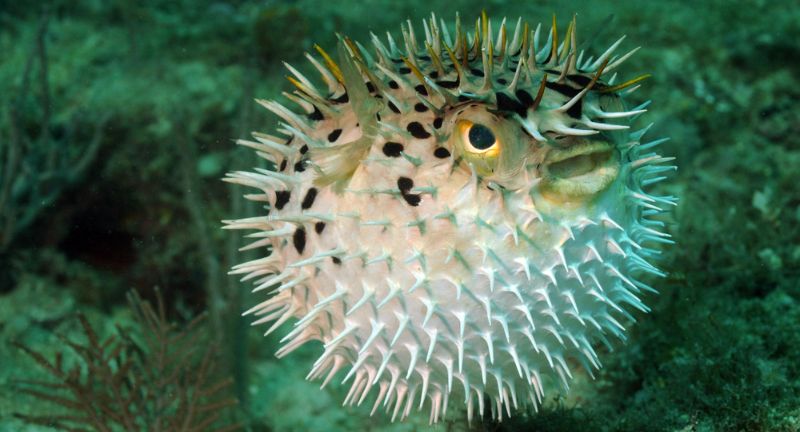
Wikipedia
Pufferfish are distinguished by their unique defense strategy, which involves inflating their bodies to deter predators. These fish harbor tetrodotoxin, an extremely potent neurotoxin that can be fatal to humans if consumed, and for which there is no antidote. This toxin targets the nervous system, potentially causing paralysis and, in critical cases, death. Despite the risks, pufferfish are prized as a delicacy in certain culinary traditions, necessitating the expertise of highly trained chefs who are adept at safely excising the poisonous parts to prevent toxin exposure.
Stonefish
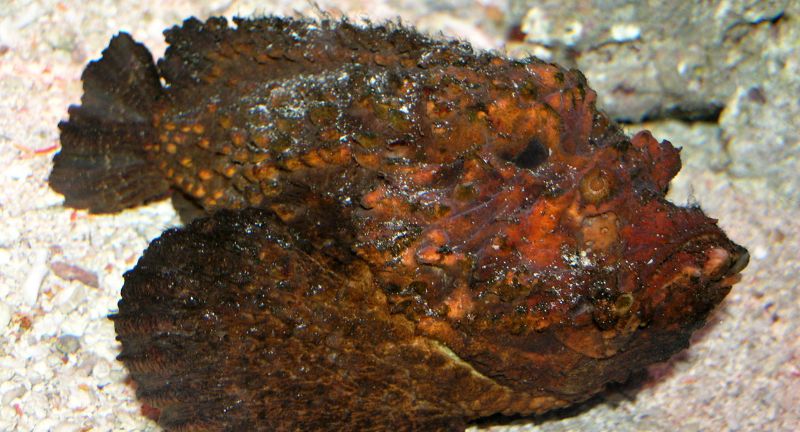
Wikipedia
Stonefish are renowned as the most venomous fish in the world, with the ability to deliver intensely painful stings that can be fatal without swift medical intervention. Their dorsal fin spines contain venom that is released under pressure, such as when accidentally stepped on. Their exceptional ability to camouflage themselves means they can easily go unnoticed, lying in wait on the ocean floor. For anyone unfortunate enough to be stung by a stonefish, immediate medical treatment is essential. The venom from a sting can lead to shock, paralysis, and, in severe cases, death if not promptly addressed.
Cone Snail
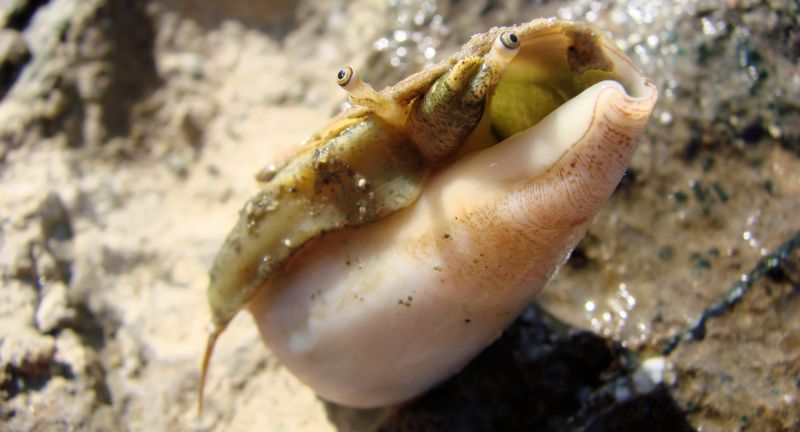
Wikipedia
Cone Snails, while admired for their aesthetically pleasing shells, possess a dangerous predatory tool. They employ a venomous, harpoon-like structure to deliver a potent blend of toxins to their prey, affecting fish and occasionally humans. The venom from certain Cone Snail species can inflict severe pain, paralysis, and even death on humans. With no antivenom developed for Cone Snail stings, these marine mollusks present a significant risk, especially to divers and shell collectors, making them some of the sea’s more hazardous creatures to encounter.
Marbled Cone Snail
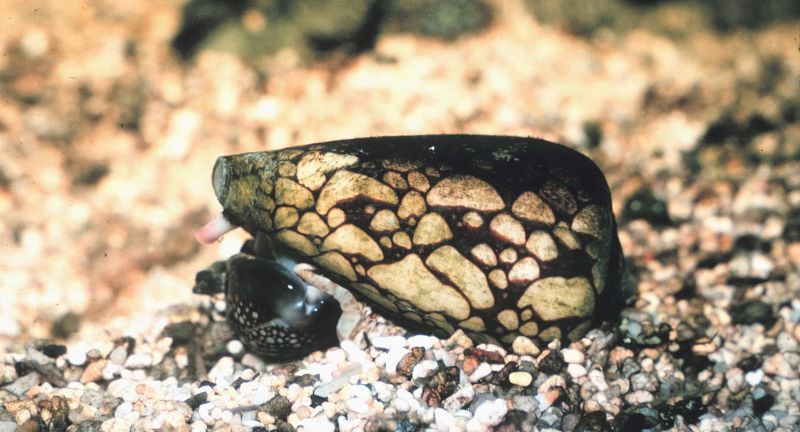
Wikipedia
Marbled Cone Snails, part of the venomous marine snail family, pose a lethal threat to humans with their ability to administer venom through a specialized tooth. This venom can cause muscle paralysis, respiratory failure, and, in severe cases, death. The allure of their beautifully patterned shells often attracts collectors, yet the danger associated with their venomous sting cannot be understated. With no antivenom available for Marbled Cone Snail stings, it is crucial for collectors and beachgoers to exercise utmost caution when interacting with or handling these potentially deadly snails.
Crocodile Fish

Wikipedia
Crocodile Fish, known for their adept camouflage, are ambush predators that seamlessly blend into the sandy or muddy seabed, making them nearly invisible to unsuspecting prey and humans alike. This ability to go undetected not only aids them in hunting but also elevates the chance of unintended encounters. Though they are generally not considered a threat to humans, inadvertent contact, such as stepping on one, can lead to injuries caused by their spiny defenses. To minimize the risk of such incidents, swimmers and divers are advised to tread carefully in shallow waters, thereby avoiding disturbance to these masterfully camouflaged fish.
Hydrozoans
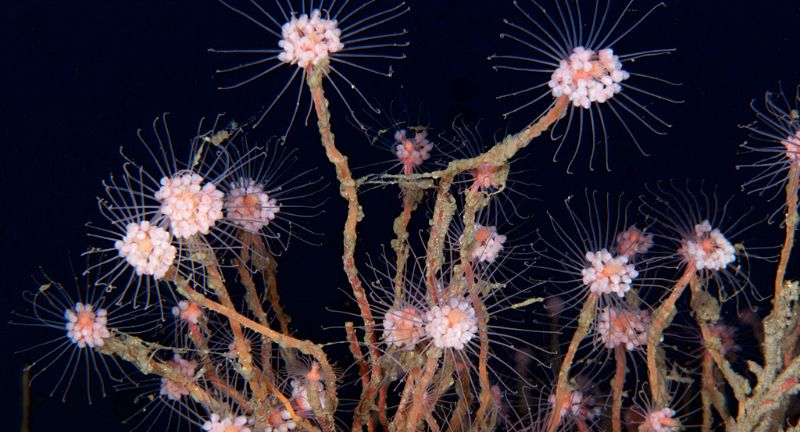
Wikipedia
Hydrozoans represent a varied collection of primarily marine creatures, encompassing entities like the Portuguese Man O’ War, which are infamous for their agonizing and sometimes hazardous stings. These organisms can manifest either as solitary beings or as symbiotic colonies that operate as a unified organism. The stings of hydrozoans can lead to a spectrum of reactions, from slight discomfort to intense pain, and on rare occasions, may precipitate more grave health complications. Beachgoers and swimmers are advised to exercise caution, as these creatures inhabit numerous global oceans, often drifting or lingering near the water’s surface, posing potential risks to unwary individuals.
Manta Rays
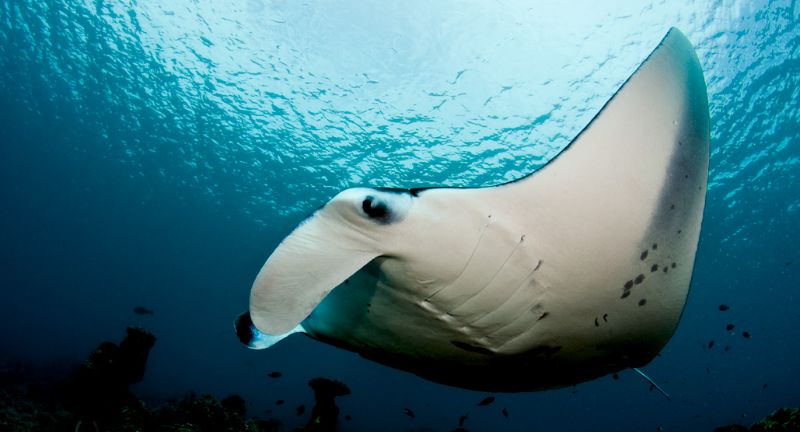
Wikipedia
Manta Rays, known for their majestic size and elegant swimming, are typically harmless to humans. They subsist on plankton, which they consume by gracefully gliding through the water with their mouths wide open. Unlike their stingray relatives, Manta Rays do not have a venomous sting, but their considerable size means that a diver could potentially be at risk if accidentally struck by their wing-like fins. These gentle giants are a marvel to observe in their natural aquatic environment, and their presence is often sought after by divers for the awe-inspiring experience of swimming in close proximity to them.
Humboldt Squid
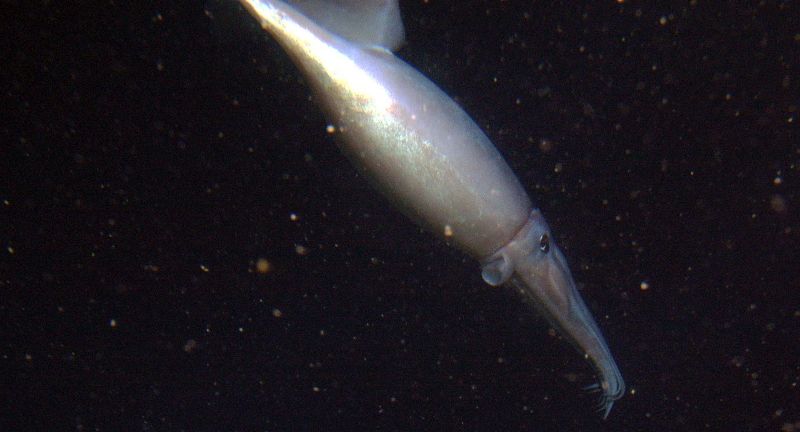
Wikipedia
Humboldt Squid are notorious for their aggressive nature, particularly towards divers in their hunting territories. They are sizable and swift, equipped with formidable beaks that can cause significant harm. Often moving in groups, these squid can display hostile behaviors toward humans, especially under conditions where they feel endangered or when food is nearby. As intriguing as these creatures are, it’s important for divers to remain cautious and to respect the boundaries of these marine animals to prevent any aggressive interactions.
Conclusion
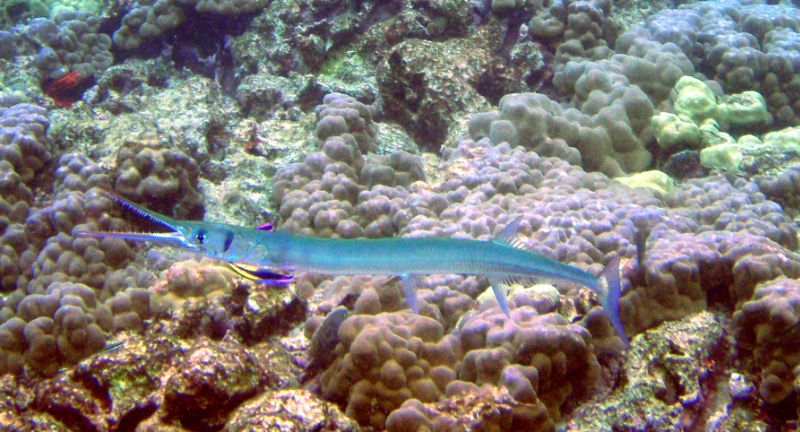
Wikipedia
Delving into the ocean’s depths unveils a rich mosaic of life, ranging from the tiniest plankton to the grandest whales, each playing a pivotal role in the ecosystem’s complex web. The ocean’s most dangerous creatures, while presenting potential risks, also capture the essence of nature’s untamed beauty and strength, serving as a powerful reminder of the ocean’s majesty and the reverence it demands. Their presence highlights the critical need for marine conservation, advocating for the protection of their environments against threats like pollution, overfishing, and the effects of climate change. As we delve further into the ocean’s mysteries, let us proceed with both responsibility and awe, committed to preserving these wonders for future generations to experience and appreciate the rich, dynamic ecosystems and their extraordinary inhabitants.
More Amazing Animals+
-
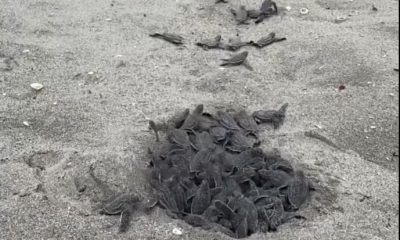

Leatherback Turtle Hatchlings in Juno Beach, Florida
-
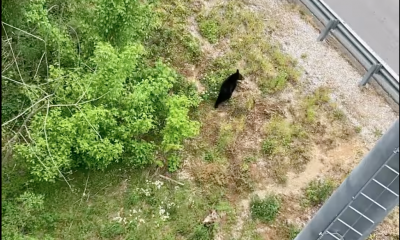

Bear sightings from the Anakeesta Chairlift! #WildBears #MomandCubs
-


Fearsome Neighbors: 25 Places Where Wildlife Terrorizes Residents
-


Elephant Mother And Daughter Get New Home With Room To…
-
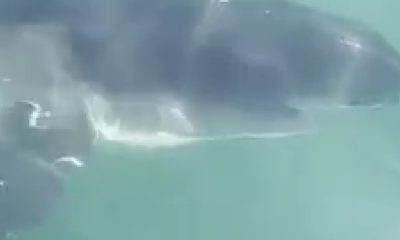

Today a 12 foot Great White shark was spotted less…
-


Otterly Adorable: 23 Reasons Why Otters Are More Than Just…
-


20 Random Facts About Lions That May Surprise You
-


20 Amazing Facts About Alpacas and Llamas
-


25 Mythical And Misunderstood Animals
-


21 Animals That Are Considered Stone Cold Killers
-


27 Weird Animal Facts That You Didn’t Know
-


Black bear crossing assisted by Ephraim City Police
